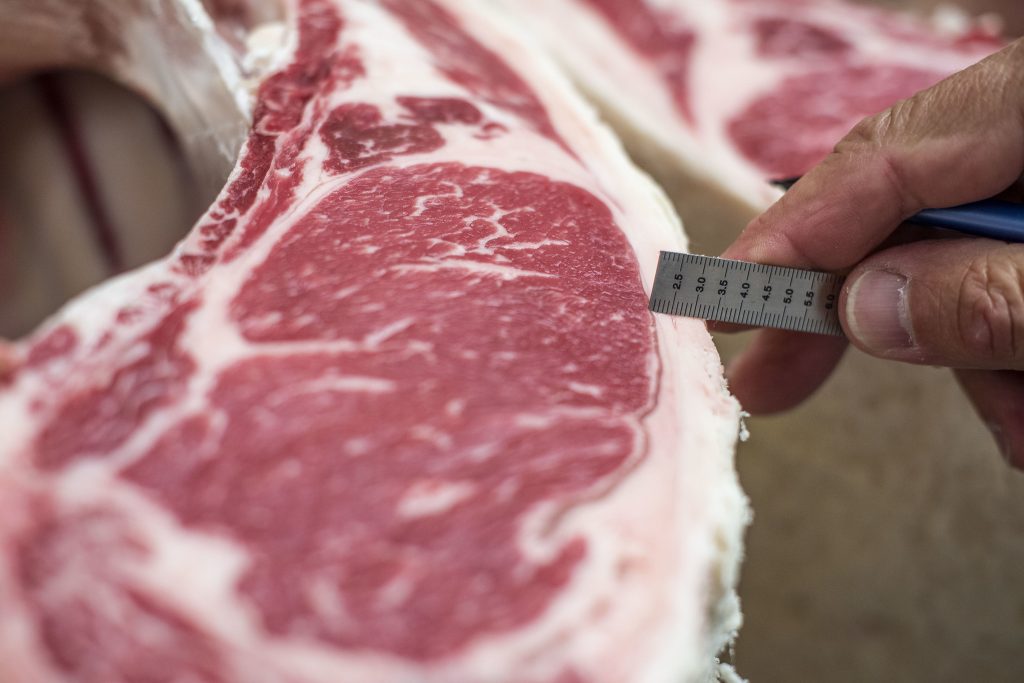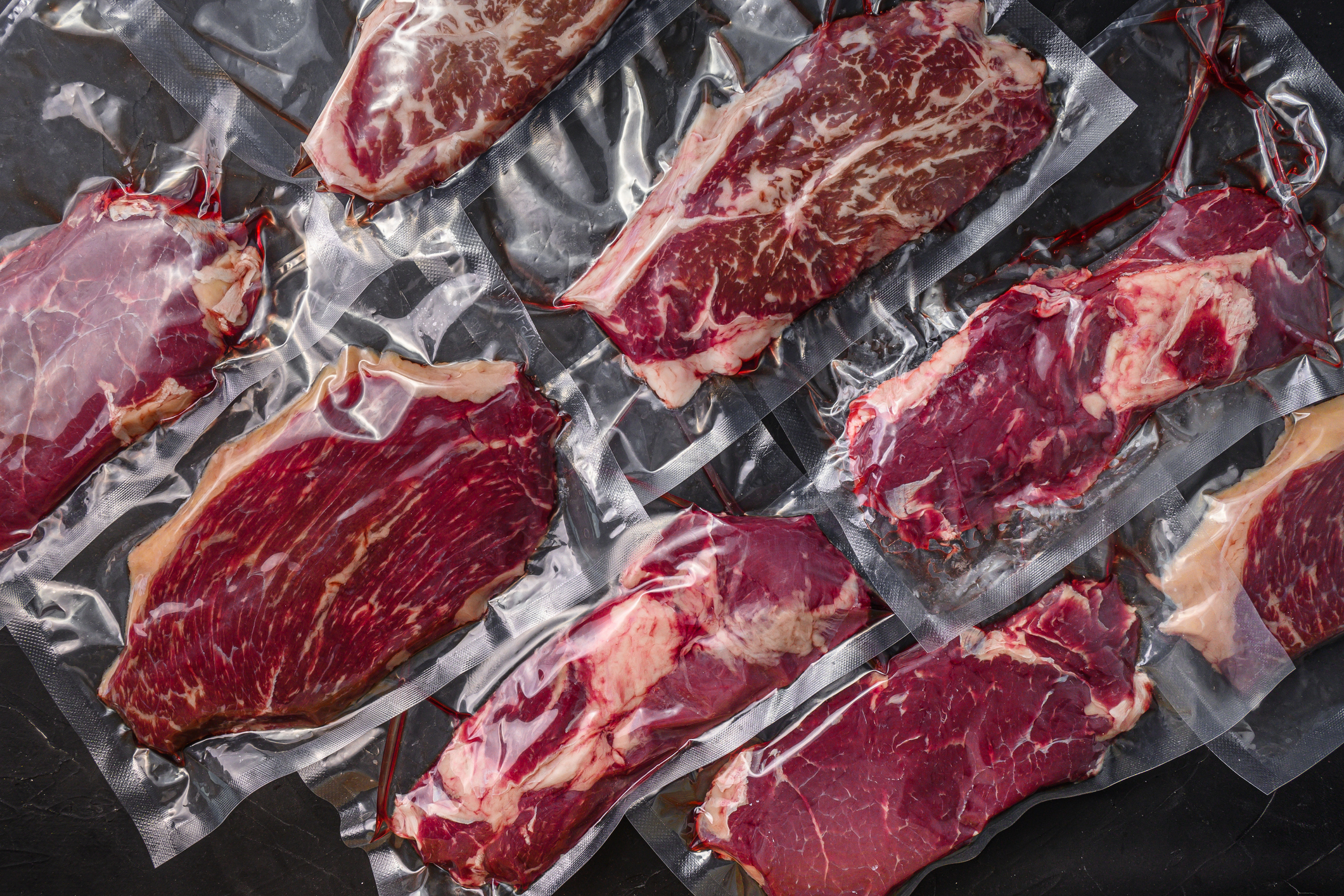A large portion of beef sold at retail in the United States is accompanied by a USDA quality grade label, such as USDA Choice. However, the label can be confusing to consumers. This article will discuss how quality grades are determined, what they mean, and how they are used.
Factors That Impact Quality Grade

Beef quality grades are determined by evaluating the maturity and the marbling of beef carcasses. As beef animals mature, their meat generally becomes tougher. This is because collagen, the most-abundant protein in the body, continues to develop throughout an animal’s life through a process called cross-linking. Collagen is a connective tissue that lies within muscle and provides structural support. As cross-linking occurs, bonds between adjacent collagen fibrils are formed, making the muscle stronger. In the case of meat animals, the more collagen cross-linking that has occurred, the tougher the meat will be. Carcass maturity can be assessed using one of three methods:
- Dentition or determining age through the presence of permanent teeth.
- Documentation of age through USDA approved programs.
- Evaluation of the ossification of bone and cartilage of the vertebrae and the color of the lean meat.
Dentition and documentation of age are evaluated by USDA Food Safety Inspection Service inspectors during the harvest process. USDA Agricultural Marketing Service graders evaluate carcass ossification and lean color during the grading process. Maturity categories are A, B, C, D, and E. Carcasses assigned to A or B maturities are generally referred to as “young,” and carcasses assigned to C, D, and E maturities are generally considered “old.”
When a beef carcass is presented to a USDA grader, the carcass is cut, or “ribbed,” between the 12th and 13th ribs of the carcass. This cut allows the grader to view the ribeye muscle, which is the only muscle in the carcass that is evaluated when assigning a quality grade according to the U.S. system. The grader will evaluate ossification and lean color to determine if the carcass should be classified as old or young beef. Then, the grader will determine the amount of marbling, or flecks of fat, within the ribeye muscle. A greater amount of marbling correlates to a higher quality grade.
What are the USDA quality grades?
The U.S. grading system has two sets of quality grades that apply to steers, heifers, and cows: one for young carcasses and one for old. Old carcasses are generally graded as USDA Commercial, Utility, Cutter, or Canner. Young carcasses can be graded as USDA Prime, Choice, Select, or Standard. Bulls do not qualify for USDA quality grades. Prime and Commercial are associated with the greatest amount of marbling; Standard and Canner are associated with the lowest. The majority of meat sold at retail is Prime, Choice, or Select.
Why do quality grades matter?
Research has shown that consumer acceptance and willingness to pay increases with higher quality grades. One report that evaluated data from multiple studies suggests that probability of a positive eating experience when eating a strip loin steak that was graded USDA Prime was 97% (Tatum, 2015). That probability decreased to 93% for steaks graded Premium Choice (Average or High Choice), 82% for steaks graded Low Choice, and 66% for steaks graded Select (Tatum, 2015).
Because of the strong relationship between higher quality grades and more positive eating experiences, increased quality grades generally result in increased prices. According to the USDA, the increased value of Choice carcasses compared to Select was approximately $6 to $24 per 100 pounds of carcass weight in 2023. For an 800-pound carcass, that would be an increase of $48 to $192 for the cattle producer. From a retail perspective, traditional steaks, such as the New York Strip or Top Sirloin, labeled USDA Choice can cost $2 to $4 per pound or more over USDA Select. However, there are some cuts that lend themselves to lower prices for Choice versus Select, such as the London Broil, where consumers are seeking leaner cuts of meat.
Overall, quality grade is simply a prediction of palatability. Many other factors influence the final eating experience, including seasonings, cooking method, and degree of doneness. However, choosing the appropriate cut and quality of your meat ingredients will set the tone for the remainder of the meal. Understanding the impact of quality grades will help guide you in that decision.



